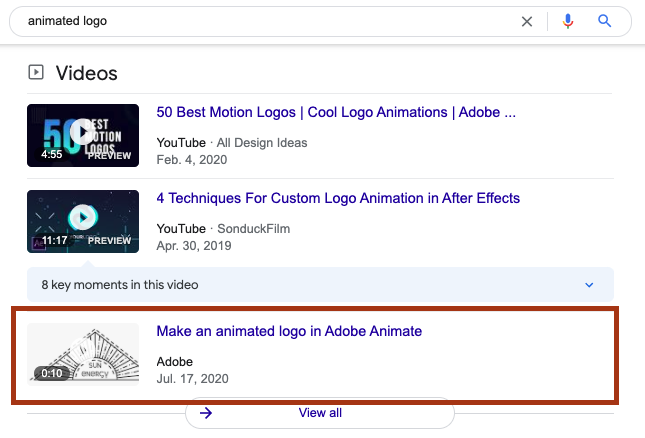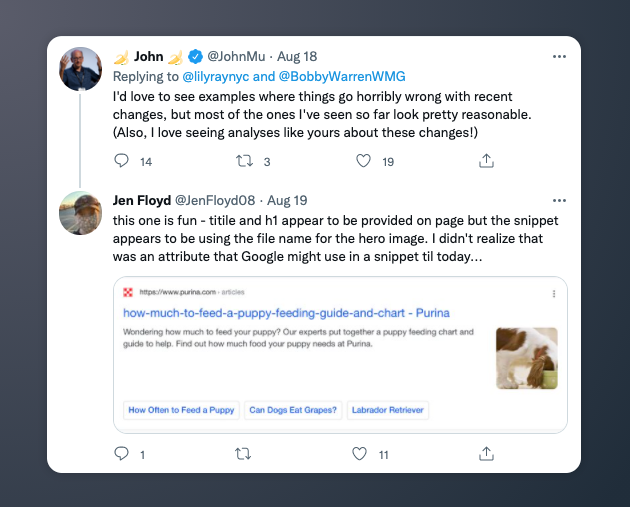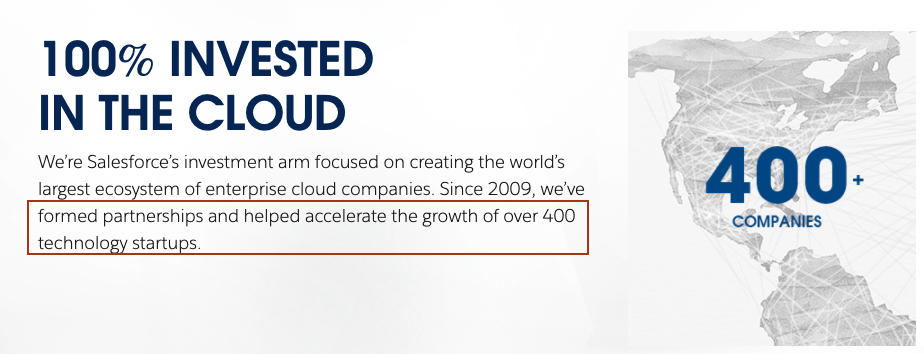Article's Content
Welcome to volume 46!
No one can win alone. No company can own every SERP with written content alone.
It’s important to diversify and leverage multiple content styles, similar to an investment portfolio, to capitalize on organic traffic.
Adobe has done exactly that by using video content to secure a spot on page one of the SERP within the video block. They’ve had videos featured in this block for correlating pages that don’t make the cut of a page one ranking.
Here’s a peek at what’s to come:
- How Adobe is using video to own the SERP
- Surprise—Google is taking control of your titles
- Salesforce Ventures’ winning investments
Adobe’s Video SERP Ownership
One SaaS company has leveraged self-hosted video content to reach an estimated 110K users a month.
Adobe, the mainstay for many creators, has leveraged video content to rank on the first page for over 980 search terms. And for 250 of those terms, the page which is hosting the video doesn’t even rank on the first page.

Adobe can drive traffic directly to their site with these videos, as they are hosted natively on Adobe.com. That means the traffic isn’t diverted through YouTube or another video hosting platform.
Adobe collects over 110K search impressions a month across the 980 search terms for which it has a video appearing in the featured spot. Over a year, Adobe has the potential to gain 1.3M site visitors from video content alone.
As I mentioned previously, 250 of Adobe’s pages don’t rank on the first page, even though their featured video does. Those pages gain 42.6K searches a month just from the videos!
This is really where we can see the power of video content in search.
Sometimes, it’s easier to target the featured video snippet rather than battle it out for a page one ranking. That’s not to discount the importance of a holistic content marketing strategy, and Adobe has a masterful strategy in place.
Looking at Adobe holistically, we see that it’s able to boast:
- 4 billion backlinks
- $220+ billion market cap
- 917,000 YouTube subscribers
- Rank for 15 million+ keywords
- 57 million+ organic visits a month
- $39 million+ worth of organic traffic
- 6 million combined Twitter followers
Wow! That’s impressive.
Although video content is just one portion of Adobe’s strategy, it plays an instrumental role in creating its $200B SEO moat, which you can read more about in our Adobe teardown: Adobe’s $200 Billion Unshakeable Moat
Key Takeaways
- Leveraging video content is a great way to target competitive search terms.
- Adobe has utilized content of all kinds to create an unshakeable SEO moat.
- Hosting quality video content on-site creates an additional avenue for capturing organic traffic.
Google Is Changing Titles Without Consent
Google has been known to pull alternate content into the title field before, especially if they believe it will better satisfy the search query of the user. Recently, they have been at it again, but this time us SEOs are noticing less than ideal results…

Jen Floyd noticed that this Purina blog post was pulling the image name into the title field. She shared it within a Twitter thread with John Mueller, who was taking the stance that “most of the ones [he’s] seen so far look pretty reasonable.”

Over the last decade, Google has been known to tweak titles to include the company’s brand name or indicate the location associated with a services page. These tweaks often went unnoticed and slipped below the radar of the masses. And usually, the update benefited the user.
This time around, the changes have been abrupt and noticeably less helpful to the searcher. Unfortunately, POTUS Biden was recently demoted back to Vice President in this one title change:

Although this has led to confusing and unhelpful title changes, Google has confirmed many times that their title changing should not affect rankings. As frustrating as it may be to see your page blatantly mistitled, Google bots still read and rank content based, in part, on the provided meta content.
I’ll admit that this is good and bad news since a misleading or misinformed title will harm CTRs. It’s all well and good to maintain a prime position on Google’s SERP, but a poor quality title won’t lead to as much site traffic.
There’s not much you can do to avoid this, because Google tends to play by its own rules. However, John Mueller has been responsive on Twitter and has flagged the more unfortunate title changes, such as POTUS Biden’s demotion, to be corrected.
Google isn’t going to catch all the mistakes, which is why it’s crucial that you run regular site audits and track CTRs.
Before jumping in to adjust meta content and furiously optimize pages to boost CTRs, check to ensure that your content is properly populating on the SERP. A fall in traffic may be due to Google’s automation adapting your provided content rather than anything you could have changed.
Key Takeaways
- Google has the power to pull alternate content into your SERP title field.
- It’s crucial to run site audits and investigate the root cause of traffic fluctuations to ensure proper optimizations are made.
- Regardless of the displayed title content, Google will always look to the provided meta content during content judgement.
The Cloud 100 and Salesforce Ventures Backing
For the past six years, Forbes has released the Cloud 100 list, which ranks the world’s top private cloud companies and recognizes tech’s hottest companies.
This year’s Cloud 100 was produced in partnership with Bessemer Venture Partners and Salesforce Ventures. Interestingly, Salesforce Ventures is an investor in 26 of the 100 companies listed in the sixth annual report.
Salesforce Ventures is investing in more Cloud 100 companies than any other venture capitalist firm. Can you believe that a major player in the SaaS industry is building and backing over 400+ companies?

With this strategic approach, Salesforce can help the upcoming generation of SaaS companies rise under their wing into the next big thing (to be or not to be acquired). And these investments are indeed paying off, with the aforementioned 26 companies breaching Forbes’ Cloud 100 list.
Behind the success of Salesforce is the original GOAT, Marc Benioff. After two years at Oracle, he was already the youngest VP ever before he decided to step out and start Salesforce way back in 1999.
Just as Salesforce Ventures helps the up and comers, Salesforce relies on a $226B B2B partnership ecosystem to keep them running smoothly. Marc knows that by investing in these tech startups, he will be able to easily integrate them into the ecosystem to grow and improve Salesforce.
Salesforce’s ecosystem is built by going beyond creating a great product and a high-performing team; it works hard to establish a strong connection with its customers. Salesforce avoids FOMO tactics and instead relies on building up a vibrant community and partner ecosystem.
Salesforce, and Marc Benioff, recognize that no one can reach extreme heights alone.
For a complete breakdown of Salesforce and the growth of its multi-billion-dollar ecosystem, check out Jessica Tee Orika’s case study: Salesforce’s $226B B2B Partner Ecosystem.
Key Takeaways
- Salesforce has built a robust ecosystem of partners and loyal customers.
- Marc Benioff knows that real company growth takes more than a high-quality product.
- Salesforce Ventures is investing in the next generation of tech startups to grow Salesforce’s ecosystem of tech infrastructure.
OTHER NEWS OF THE WEEK:
💳 OPay, an African fintech company, has raised $400M in new financing, bringing the company’s valuation to $2B.
👤 “NFTs are an intersection of culture and commerce,” says Cuy Sheffield, Visa’s head of crypto, as Visa announces its first step into NFTs with the purchase of CryptoPunk 7610 for $150K.
📈 Led by Redpoint Ventures, analytics data platform Preset raised $35.9M in Series B funding.
BRAIN FOOD OF THE WEEK:

During Tesla’s AI Day event on August 19, Elon Musk announced that Tesla is taking their self-driving car technology and putting it into a robot’s body,
“It’s intended to be friendly and navigate through a world built for
humans,” said Musk, describing the 5’8 robot, which weighs in at 125 pounds.
The robot’s “vision” will come from the same autopilot camera used by Tesla vehicles to navigate. The robot’s “face” will feature a screen that can display information when it needs to communicate. At the core, this robot will run and operate via Tesla’s full self-driving computer technology.
Musk’s mission to get this bot into homes is many years away, but he predicts a prototype will be ready by 2022.
TWITTER THREAD OF THE WEEK:
The secret behind Shopify’s $6M tool by Ryan McCready
WHAT WE’RE WIRED INTO THIS WEEK 🎧:
The Fame by Lady Gaga (best track: Paparazzi)
Originally sent out, by me Cali B, on Thursday, August 26, 2021.
Stay up to date with all of our latest findings by subscribing to our newsletter today. Signing up also gives you early access to Ross’ Tuesday essay full of exclusive industry insights.
Quick, do it now before the next drop!








